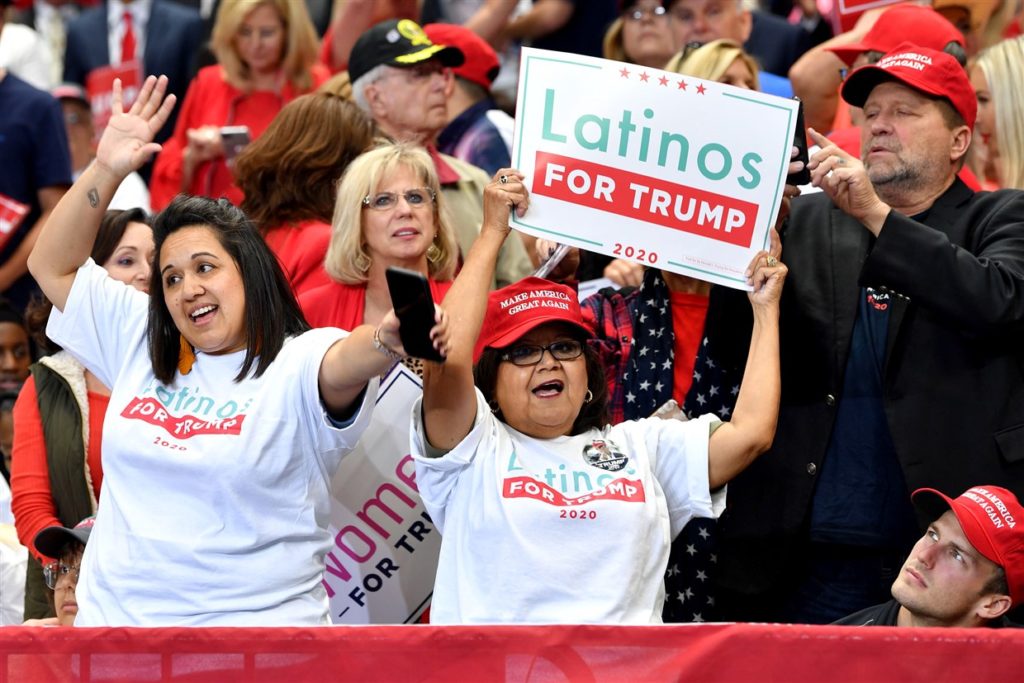Maybe Pay Attention to Latino Communities?

There’s no question that the biggest failure of both the Biden campaign and the media in 2020 was on Latinos. Biden didn’t put much energy into these voters and it really showed, given the unbelievable shift to Trump. Yes, this is partly about South Florida. But that it also happened in the Rio Grande Valley says this is a lot more than fear-mongering about socialism. And yet, it doesn’t seem to have been nearly as big a shift in Nevada and Arizona, both of which went to Biden, though it does look like there was some shift right there too. Some of the miss about what was going on has to do with an ignorance of Latino issues in newsrooms because simply put, no one spends enough time in these communities or hires enough people to cover them. Perla Trevizo at Pro Publica and The Houston Chronicle has a good discussion of these issues.
The reasons that Latinos voted for Trump in Florida are different from those who did so in Texas. For Cuban Americans and Venezuelans, among other issues, it was the perceived threat of “socialism” from Biden, while for Mexican Americans in Texas the pull was in part secure borders and support for law enforcement.
The press, pundits and politicians at the national level still see immigration as the key issue for Latinos. If you want to win “their” vote, talk about Dreamers, talk about citizenship, talk about the border. But just as for any other group, there are so many other issues that are important. More than 18% of the U.S. population is Hispanic — 40% in Texas — yet we represent roughly 7% of the newsroom workforce, according to the News Leaders 2019 Diversity Survey. Latinos account for 10% of the staff at ProPublica, 21% at The Texas Tribune and 30% of our joint newsroom partnership.
When trying to make a point about the diversity within this community, I often turn to my family. My grandfather was born in New Mexico to a father who worked at a smelter. At some point his family went back to Mexico, where my grandfather grew up, got married and had kids.
Eventually, he returned to the U.S. for work. The older siblings — including my mom — didn’t fully learn English, prefer to watch Telemundo and identify more as Mexican than American. The younger siblings, though, graduated from high school in El Paso, speak Spanglish and have a split identity between both countries.
And their children? Well, out of all the cousins very few of us can still communicate fluently in Spanish, and even fewer of us can read and write in our parents’ native tongue. Most grew up with “Sesame Street” and not “El Chavo del Ocho” and prefer Flaming Hot Cheetos instead of Churrumais. They have few ties to their parents’ country.
Within the family, there are small-business owners, a nurse, mechanics, military members — even a journalist. There are those who support Trump, those who are religious and conservative, those who are apathetic and disillusioned. There are those who sympathize with immigrants but feel “we” have our own problems here, and those for whom the border should be an imaginary line. Abortion, health care and equal rights are all defining issues — just like for the rest of America.
That’s what we fail to understand. That even within one group, such as Mexican Americans, there can be a wide range of views, of beliefs, of priorities. Growing up in El Paso, immigration or the Border Patrol didn’t control my life, even when you could see Juárez from our backyard. That’s not what my parents talked about at the kitchen table. They worried about paying the mortgage and making sure we graduated.
When I became a border reporter, I strived to go beyond the important but well-covered stories of migrant deaths in the desert, about unauthorized migration and Border Patrol shootings. It was hard, and I didn’t always succeed. In this country, immigration is often covered as a problem, as a wave of people coming across, an invasion. The story of assimilation or divergent views and experiences among immigrant families is much tougher to tell and to sell, but they are now more important than ever.
These areas, these communities, are vibrant places with issues including limited access to well-paying jobs, quality education, health care and civic engagement. But that’s not the story of the border we are generally exposed to.
Maybe actually paying attention to the complexities of the largest minority group in the United States would be a good idea? I know, call me crazy.


